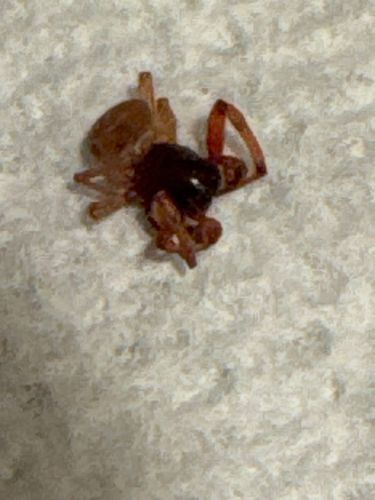Ground Spider
Scientific Name: Family Gnaphosidae (e.g., Scotophaeus blackwalli, S. insularis)
Order & Family: Araneae, Gnaphosidae
Size: Most ground spiders range in body length from 3 mm to 15 mm (0.12 to 0.6 inches), with females often being slightly larger than males. Leg span can be significantly greater than body length.

Natural Habitat
Ground spiders are commonly found in a variety of habitats, including forests, grasslands, gardens, and often in and around human dwellings. They prefer to live on or near the ground, under rocks, logs, leaf litter, or debris. Indoors, they can be found in basements, crawl spaces, and ground-level rooms, often seeking shelter in dark, undisturbed areas.
Diet & Feeding
Ground spiders are predators, feeding on various small insects and other arthropods they encounter on the ground. Their diet primarily consists of insects like ants, beetles, and other crawling invertebrates.
Behavior Patterns
Ground spiders are nocturnal hunters and do not build webs for catching prey, but rather for shelter and egg sacs. They are active hunters, often found scurrying along the ground or walls at night. When disturbed, they tend to flee rapidly. Mating typically occurs after the male finds a receptive female; females lay eggs in a silk sac which they guard until the spiderlings hatch.
Risks & Benefits
Ground spiders are generally considered harmless to humans. Their bites are rare and typically result in only mild, localized pain, redness, and swelling, similar to a bee sting. They are beneficial in ecosystems as natural pest control, preying on various insects and helping to maintain ecological balance. They do not pose any significant risks unless an individual has a rare allergic reaction to their venom.
Identified on: 8/20/2025